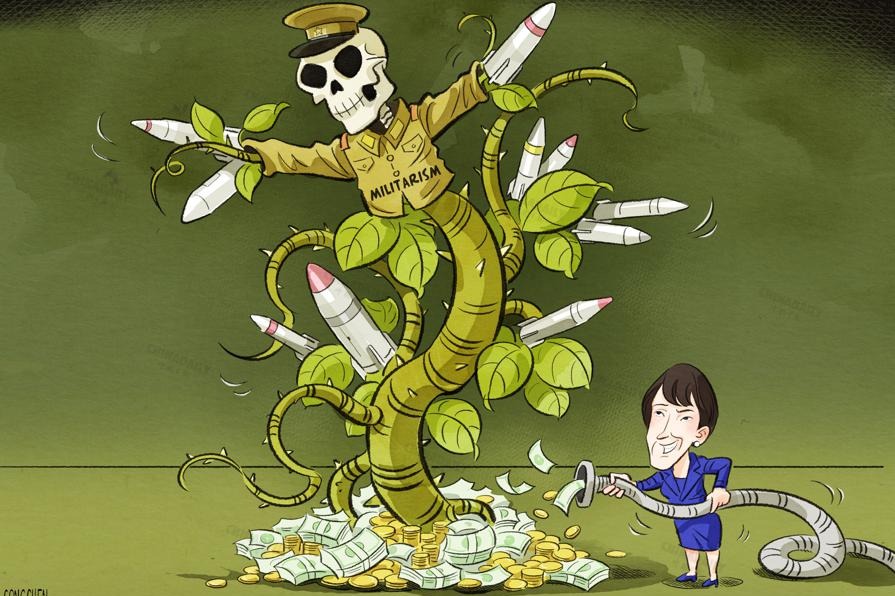Back in black
China Daily | Updated: 2018-10-13 10:50

Vinyl's superior sonic qualities endear it to audiophiles, while younger people are beguiled by its aesthetics - not least of all the album covers
The march of progress often tramples viable older tech underfoot, only for it to make a comeback later. The boom in artificial fabrics such as nylon, polyester and neoprene last century was followed by a return to cotton, wool and silk, eliciting in many a sigh of relief and comfort. Could vinyl records be set to do the same?
As streaming and digital downloads have become dominant in our "connected world", the compact disc has gone the way of the dodo. This is partly because new computers rarely come with CD players built in, but also because the tangible aspects of CDs, such as the flimsy plastic and paper packaging, hardly inspire devotion. For those who want to hold and feel their music, old-style records are rapidly replacing CDs.
Vinyl sales are at a 25-year high, with pressing plants currently unable to keep up. Stores such as HMV are well-stocked with the black gold. Bands are excited about it, too - for one, 1980s legends Eurythmics are reissuing all their albums on vinyl this year.
For most of the 20th century, the vinyl album was embedded in the world's imagination and on its record shelves. But in the mid-'80s, the rug was pulled out from under music consumers when the CD was foisted on an unsuspecting public. It was digital, we were told, and therefore its reproduction must be perfect.
In fact, however, it was a step backward for audio quality. To make a digital recording, analogue signals have to be "sampled". The CD introduced the 44.1 kHz audio sampling rate, which takes "snapshots" of the analogue signal 44,100 times per second. Each snapshot is then measured with 16-bit accuracy, giving only 65,536 possible sonic values.
Thus, CDs don't capture the complete sound wave. Complex tones, such as trumpets or drum transients, may be distorted because they occur too fast to be converted adequately. On the other hand, the groove cut into a quality vinyl record mirrors the original sound's waveform with a much greater frequency range. And while the analogue output of a record player can be fed directly to your amplifier, digital players need to convert the signal back to analogue.
Barring dust, static or scratches, a quality vinyl record played on good equipment should be more accurate and richer than any CD - and even so-called "lossless" digital formats with much higher sampling and bit rates. While subtle surface noise is a facet of vinyl records, most people grow to appreciate the "atmosphere" it gives. Records do get worn over time, but if looked after properly, they're still far more durable than CDs (and possibly even the internet).
They're less likely to malfunction than CDs or digital files because, well, there's no such thing as a "vinyl virus".
Records also have a wow factor and were one of the most interesting cultural artefacts of the last century. A rite of passage for many music-addicted teens was to raid their parents' dusty record collections (and wardrobes) to discover older music and broaden their horizons. It could be argued that the widely bemoaned quality level of modern popular music (US musician Moby recently shamed it as "terrible - shallow and trite and unredeemable") is one consequence of this heirloom vacuum.
Vinyl's demise also killed the art of visual design. From the American jazz album covers of the '40s and '50s to those of rock and pop a few decades later, cover art became an indelible visual counterpoint to the music of these golden eras. Many bands were intimately involved in the creation of the covers - no surprise, given the art-school background of many.
After the CD format took over the market, vinyl clung to life as a minority interest and due to some DJs' preference for it. It only started to make a comeback in the late 2000s. From less than a million units sold in 2006, Deloitte projects global vinyl sales for this year at 40 million units, mostly in the US, UK and Japan, with a value of $1 billion - about 6 percent of broader music industry revenues. Looks like it's time to start building (or rebuilding) that record collection!
- CDLP
























